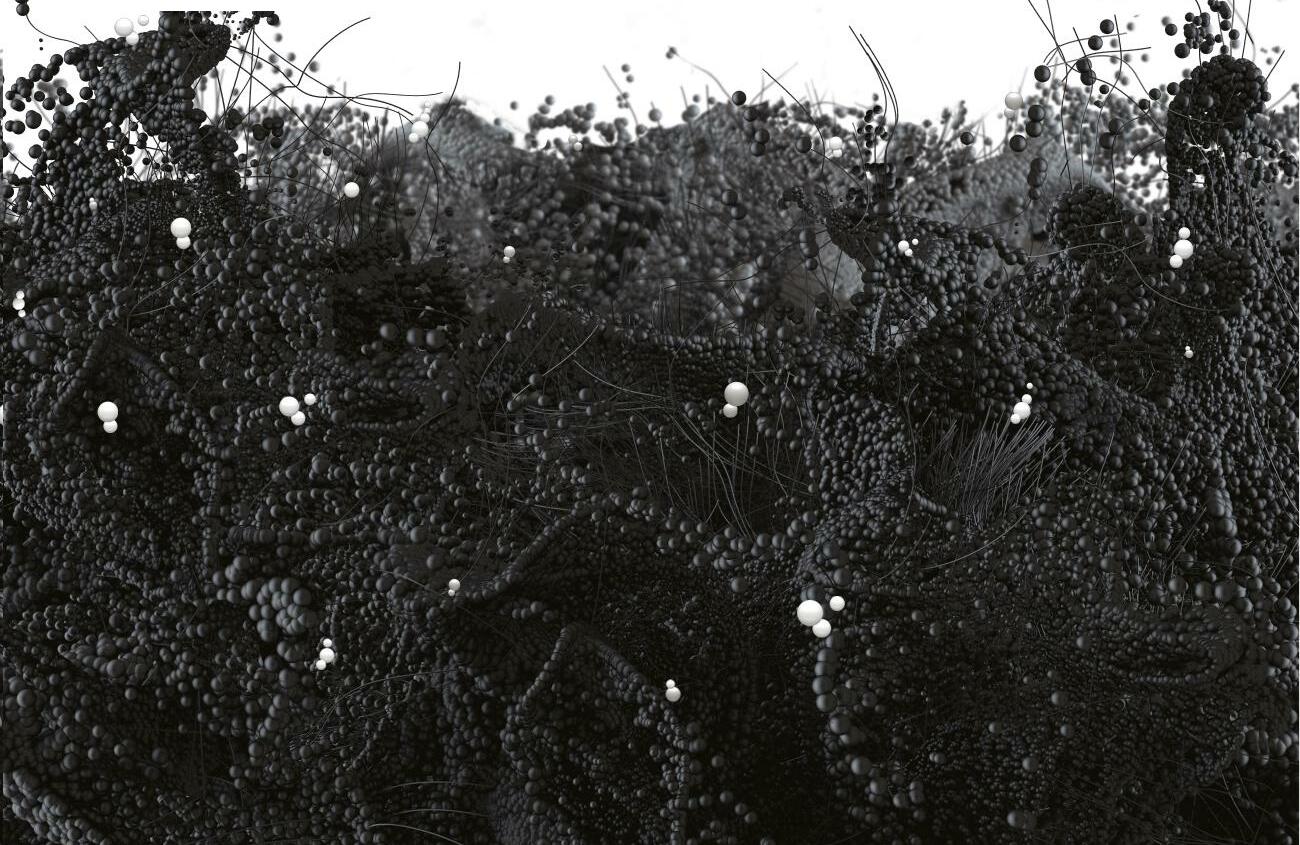WHEN BLACK HOLES TURN WHITE
All About Space UK
|Issue 160
Can bouncing black holes help physicists find the ultimate theory of everything?

Somewhere out there in the vastness of space lurks a black hole smaller than the full stop at the end of this sentence. Minuscule but mighty, it could hold the key to unlocking some of the greatest mysteries in the universe. Black holes are the ultimate cosmic laboratory, a way for physicists to test out their theories in an environment so extreme that space and time are curved and warped. Even light cannot resist their eternal grasp, so we see no light reflected from them at all. We can only spot them when their gravity affects something visible or they merge to create gravitational waves. Few places have such a high amount of energy in such a small space.
But what happens if you fall into one? The bad news is you're unlikely to survive the ordeal. The difference in gravity between your feet and your head would eventually get so extreme that it would overcome the forces holding your atoms together. You'd be torn apart into thin strips of human spaghetti, which is where the process gets its whimsical name: spaghettification. But where do your spaghettified atoms ultimately end up? What's at the bottom of a black hole?
Denne historien er fra Issue 160-utgaven av All About Space UK.
Abonner på Magzter GOLD for å få tilgang til tusenvis av kuraterte premiumhistorier og over 9000 magasiner og aviser.
Allerede abonnent? Logg på
FLERE HISTORIER FRA All About Space UK

All About Space UK
MYSTERIES OF THE UNI WHERE ARE ALL THE SPIRAL GALAXIES?
There are far fewer spiral galaxies than elliptical ones in the Supergalactic Plane, and scientists are keen to discover why
7 mins
Issue 161

All About Space UK
ZOMBIE STARS
+10 OTHER TERRIFYING SPACE OBJECTS
8 mins
Issue 161

All About Space UK
HOW TO BEAT LIGHT POLLUTION
Thought it was impossible to observe the wonders of the night sky from towns and cities? Think again. Follow our tips and tricks on successfully observing through sky glow
2 mins
Issue 161

All About Space UK
15 STUNNING STAR CLUSTERS
These beautiful stellar groupings are spattered across the cosmos
8 mins
Issue 161

All About Space UK
Eileen Collins "It was a difficult mission...we were the first to see Mir"
Having served as both the first female pilot and first female commander of NASA's Space Shuttle, Collins boosted the involvement of women in space exploration to a whole new level
9 mins
Issue 161

All About Space UK
MARS LEAKS FASTER WHEN IT'S CLOSER TO THE SUN
The Red Planet has lost enough water to space to form a global ocean hundreds of kilometres deep
2 mins
Issue 161

All About Space UK
FUTURE TECH KANKOH-MARU
This ambitious reusable spacecraft will be capable of taking 50 people to and from orbit
2 mins
Issue 161

All About Space UK
THE FINAL FRONTIER
Beyond the reach of the Sun is a fascinating region of the cosmos that were only just beginning to explore
8 mins
Issue 161

All About Space UK
A long-lost moon could explain Mars' weird shape and extreme terrain
A long-lost moon could explain why Mars is so different from the other rocky planets in the Solar System. Today Mars has two tiny moons.
2 mins
Issue 161

All About Space UK
A sprinkling of cosmic dust may have helped kick-start life on Earth
Cosmic dust may have helped kick-start life on Earth. New findings challenge a widely held assumption that this wasn't a plausible explanation.
3 mins
Issue 161
Listen
Translate
Change font size

